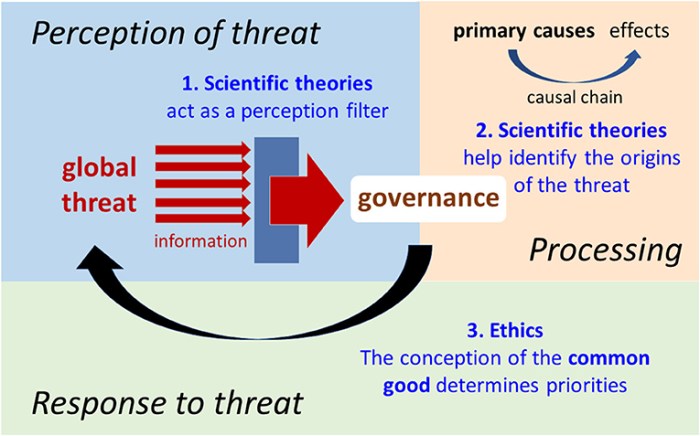
Global card game trends are transforming how players engage with their favorite pastimes, blending tradition with innovation in exciting ways. From classic strategies to modern adaptations, the landscape of card gaming is evolving, reflecting cultural shifts and technological advancements.
The rise of digital platforms, alongside the enduring appeal of physical cards, has created a dynamic environment where social media further fuels community interaction and popularity. This exploration delves into current trends, regional preferences, and the technological influences reshaping the world of card games.
Current Trends in Card Games
As the world of card games continues to evolve, various trends have emerged, reflecting changes in society and technology. From new formats to the impact of digital platforms, the landscape of card gaming is vibrant and diverse.
Current Formats and Styles
One of the most notable trends in card games is the rise of unique formats that cater to various player preferences. Popular formats such as Draft, Commander, and Standard have gained traction, allowing players to engage in different ways. Additionally, the fusion of traditional card mechanics with modern themes has made games more accessible and appealing to a wider audience.
The Rise of Digital Platforms
Digital platforms have revolutionized the way card games are played and experienced. Games like Magic: The Gathering Arena and Hearthstone have not only maintained the essence of traditional gameplay but have also introduced new mechanics and features that are exclusive to digital formats. The convenience of playing online has attracted both new players and seasoned veterans, creating a thriving online community.
Influence of Social Media
Social media plays a crucial role in the popularity and community engagement of card games. Platforms like Twitter, Instagram, and TikTok allow players to share experiences, strategies, and artwork, fostering a sense of belonging. Content creators and influencers have emerged, providing tutorials and showcasing gameplay, which in turn attracts new players into the fold.
Global Variations in Card Game Preferences
Card game preferences are not uniform across the globe; they vary widely based on cultural influences and regional interests. Understanding these variations can provide insight into the rich tapestry of card gaming.
Cultural Preferences
Different cultures have their own unique card games that reflect local traditions and values. For instance, in Japan, Hanafuda is popular and often features beautifully illustrated cards representing the seasons. In contrast, European countries may prefer games like Tarock or Skat, which involve intricate strategies and partnerships.
Unique Card Games
Unique card games from various countries often carry significant cultural meaning. For example:
- Gangster
-A popular card game in Italy that combines strategy with social interaction. - President
-Common in various countries, this game emphasizes hierarchy and social dynamics. - Uno
-Originally created in the United States, it has achieved global recognition, appealing to families and friends alike.
Traditional versus Modern Adaptations
While traditional card games continue to thrive, modern adaptations have brought innovative mechanics into play. Games like Exploding Kittens and Cards Against Humanity have redefined the genre, incorporating humor and contemporary themes that resonate with younger audiences.
The Role of Technology in Card Gaming
Technology has played a pivotal role in reshaping the card gaming landscape. From advancements in game design to the integration of immersive experiences, the impact is profound.
Advancements in Technology
Recent technological advancements have enhanced the way card games are designed and played. Innovations such as digital playtesting and automated card shuffling have streamlined the development process, allowing designers to focus more on creativity and less on logistics.
Comparison of Digital and Physical Card Games
Here’s a comparison of digital versus physical card games, highlighting their features:
| Feature | Digital Card Games | Physical Card Games |
|---|---|---|
| Accessibility | Easily accessible on various devices. | Requires physical cards and setup. |
| Graphics | Visually dynamic with animations. | Static images and illustrations. |
| Community Interaction | Real-time online interactions. | Social interactions during gameplay. |
Impact of AR and VR

Augmented reality (AR) and virtual reality (VR) are beginning to influence card gaming experiences significantly. AR can enhance gameplay by overlaying digital elements onto physical cards, while VR offers immersive environments where players can interact with the game world in new ways. These technologies promise to redefine engagement, making card games more interactive and enjoyable.
The Evolution of Card Game Design
Card game design has seen a remarkable evolution over the years, with fresh mechanics and innovative elements emerging frequently.
Development of Mechanics
The mechanics of card games have grown increasingly complex and engaging. Designers are now incorporating multi-layered strategies, variable player powers, and unique win conditions that keep the gameplay fresh and exciting.
Innovative Design Elements
Recent card games have introduced several innovative design elements, such as:
- Asymmetrical Gameplay
-Where players have different abilities and objectives. - Deck-Building Mechanics
-Allowing players to customize their decks during the game. - Story-Driven Elements
-Providing narratives that influence gameplay decisions.
Response to Player Feedback

Game designers are increasingly responsive to player feedback, using it to refine and enhance their games. Community input can influence everything from rule adjustments to the introduction of new gameplay features, ensuring that the games resonate with their audience.
Community and Social Aspects of Card Games
The sense of community is vital in the card gaming world, with players often forming lasting connections through their shared interests.
Importance of Community
Community engagement fosters a supportive environment where both new and experienced players can thrive. Players often share strategies, organize meet-ups, and participate in discussions, enriching the overall gaming experience.
Popular Events and Tournaments
Throughout the year, numerous card gaming events and tournaments draw participants from around the globe. Some well-known events include:
- Magic: The Gathering Grand Prix – A major international tournament series.
- World Series of Poker – The pinnacle event for poker players.
- Card Game Fest – A gathering celebrating various card games, featuring workshops and competitions.
Ways to Connect
Players can connect and engage with one another through various platforms and activities:
- Join local gaming clubs or communities.
- Participate in online forums and social media groups.
- Attend gaming conventions and expos.
Future Predictions for Card Games
The future of card games appears promising, with several potential trends and innovations on the horizon based on current observations.
Potential Future Trends
Emerging trends in card gaming suggest that hybrid formats, combining digital and physical elements, will become more common. There may also be an increase in games designed specifically for remote play, reflecting ongoing changes in lifestyle.
Emerging Markets and Demographics
As gaming becomes increasingly popular among younger demographics, emerging markets in Asia and Africa present new opportunities for card game growth. Companies are likely to tailor their games to resonate with local cultures and preferences.
Speculative Innovations
Here’s a speculative look at possible innovations in card mechanics and themes:
| Innovation | Description |
|---|---|
| Dynamic Storylines | Cards that change based on previous game outcomes. |
| Environmental Integration | Games that use real-world weather or location data. |
| AI Opponents | Advanced AI systems that adapt to player strategies. |
The Impact of Global Events on Card Games
Global events, such as pandemics, have significantly influenced card game trends, leading to adaptations that reflect changing lifestyles.
Effects of Global Events
The COVID-19 pandemic, for instance, accelerated the shift toward digital platforms as in-person gatherings became limited. This shift allowed many traditional card games to maintain relevance and reach new audiences.
Adaptation to Changing Lifestyles
Card games have adapted to new social restrictions by offering digital versions and online platforms where players can connect and compete without physical proximity. Many game publishers developed online versions of their popular titles, ensuring continuous engagement.
Resilience of the Community
The card gaming community has demonstrated remarkable resilience during challenging times. Players have found creative ways to host virtual tournaments and maintain social connections, showcasing the enduring appeal of card games.
Conclusion
In conclusion, the ongoing evolution of global card game trends reveals a vibrant tapestry of innovation and cultural exchange. As technology continues to advance and communities grow, the future of card gaming promises to be both exciting and inclusive, inviting players from all backgrounds to join in the fun.
Key Questions Answered
What are the most popular card games right now?
Popular card games include Magic: The Gathering, Pokémon, and Cards Against Humanity, alongside various online adaptations.
How has technology influenced card games?
Technology has introduced digital platforms, enhanced gameplay with AR and VR, and facilitated online tournaments and communities.
What cultural variations exist in card game preferences?
Different regions have unique card games, such as Mahjong in China and Pinochle in the U.S., showcasing diverse playing styles and traditions.
How do social media trends affect card gaming?
Social media boosts visibility, fosters communities, and promotes events, making it easier for players to connect and share experiences.
What future trends can we expect in card gaming?
Future trends may include more immersive digital experiences, innovative game mechanics, and the growth of online and hybrid tournaments.







![[Card] Balancing Forces : r/collectivecg](https://biovac.info/wp-content/uploads/2025/07/p8aoiyni6ex21-300x300.jpg)